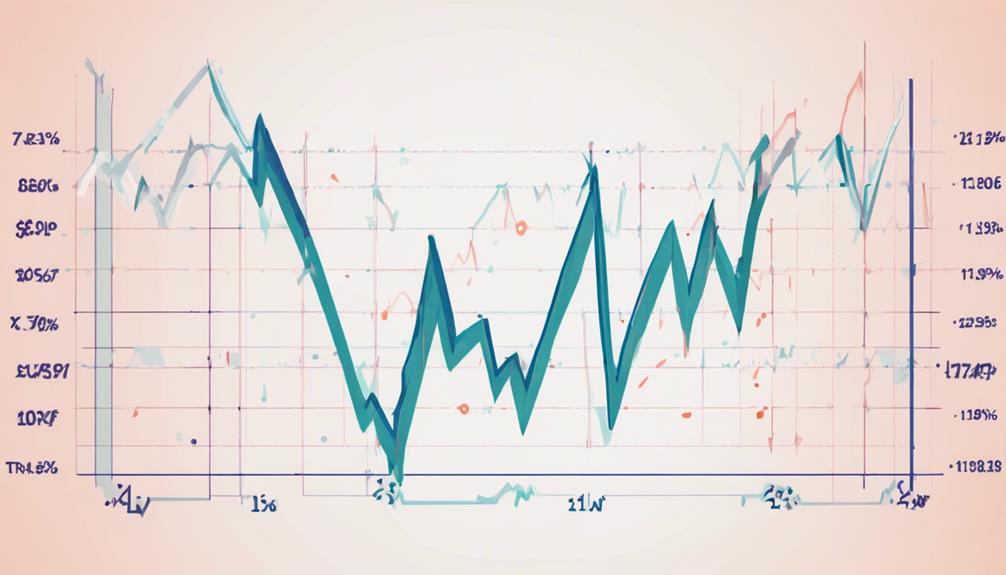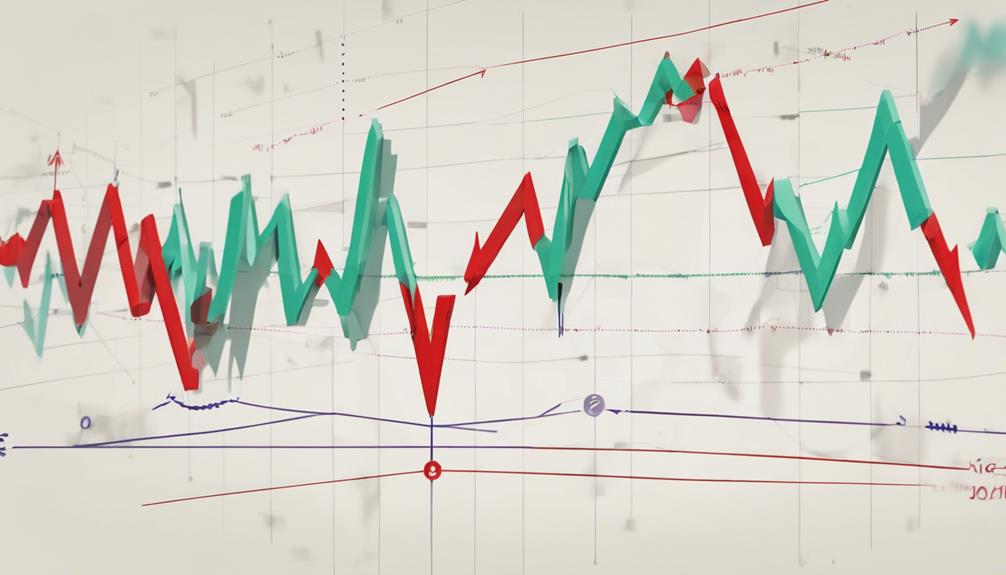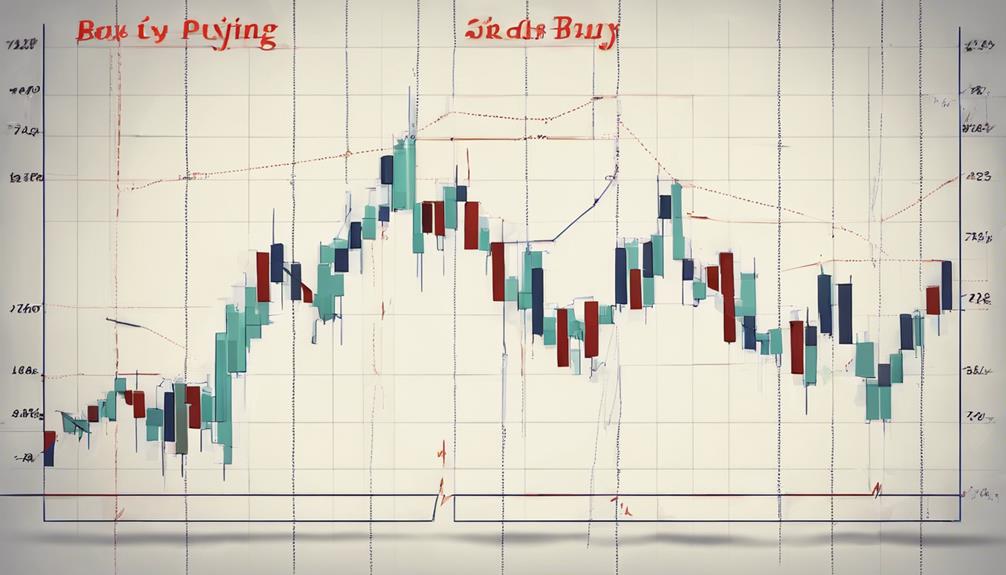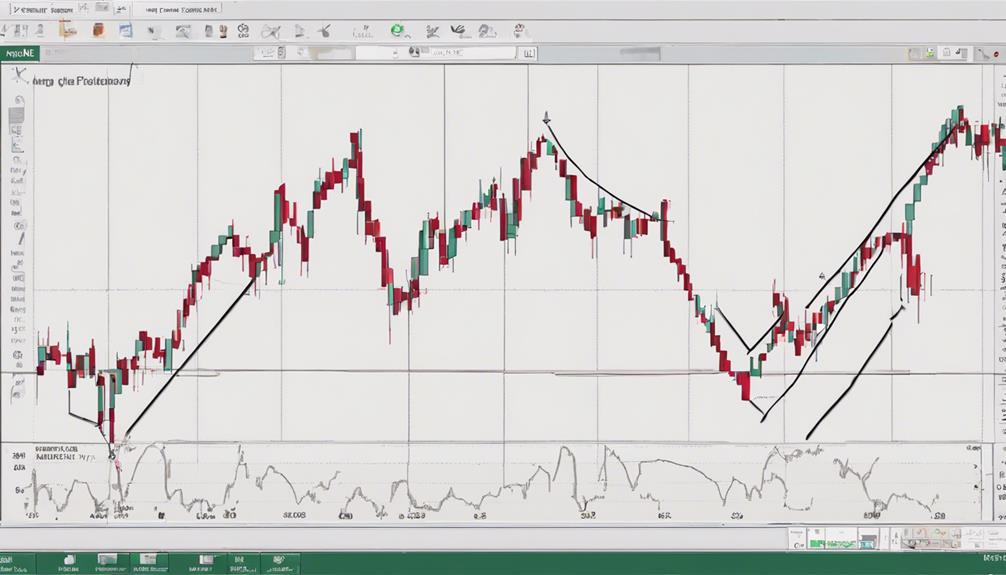The Zig Zag indicator has gained popularity among traders for its ability to simplify trading strategies and aid in trend identification.
While it can be a valuable tool for capturing significant price movements and filtering out market noise, there are nuances to consider.
As traders delve into the intricacies of utilizing the Zig Zag indicator effectively, they may uncover hidden potential for enhancing their trading performance.
Understanding the Zig Zag Indicator
When delving into the realm of technical analysis in trading, a fundamental aspect to grasp is the functionality and significance of the Zig Zag indicator. The Zig Zag indicator works by connecting market highs and lows, allowing traders to identify trends and potential reversals in the market. By filtering out noise in price movements, this indicator focuses on significant price changes, aiding traders in making informed decisions.
Customizable settings such as depth, deviation, and backstep parameters enable traders to tailor the Zig Zag indicator to their specific trading preferences.
Although not a default feature in most trading platforms, the Zig Zag indicator can be easily installed from the marketplace. Its utility lies in assisting traders in determining optimal entry and exit points, confirming market trends, and pinpointing potential buy and sell opportunities within price channels. Understanding how to effectively use the Zig Zag indicator can enhance a trader's ability to navigate the complexities of the market with more precision and confidence.
Calculating the Zig Zag Indicator

The calculation process of the Zig Zag Indicator involves filtering out minor price movements below a specified threshold percentage to identify significant price reversals and plot these points on a chart for trend analysis.
- The Zig Zag Indicator is used as a tool to identify trend reversals by focusing on significant swing points rather than minor fluctuations in price movements.
- By adjusting the threshold percentage, traders can customize the indicator to suit different market conditions and trading strategies.
- This indicator simplifies the visualization of market trends on a chart, making it easier for traders to spot potential entry and exit points based on the identified significant price movements.
Applying the Zig Zag Indicator

Utilizing the Zig Zag Indicator in trading strategies enhances the ability to pinpoint significant trend reversals and filter out market noise effectively. This tool aids traders in confirming market trends, identifying entry and exit points, and establishing key levels for making informed trading decisions.
By manually drawing trend lines based on the Zig Zag indicator, traders can visualize market swings and patterns, which can be crucial for strategic planning. Furthermore, when combined with the Elliott Wave technique, the Zig Zag indicator can provide a comprehensive analysis of price movements, thereby improving trade decision-making processes.
Traders can optimize their trading strategies by capitalizing on price movements within a channel, leveraging the Zig Zag indicator to enhance their overall market analysis. Overall, incorporating the Zig Zag indicator into trading methodologies offers a systematic approach to identifying trends, setting key levels, and executing well-informed trade positions.
Zig Zag Indicator Trading Examples

Employing the Zig Zag Indicator in trading examples illuminates its effectiveness in identifying trend reversals and guiding entry points with precision. When utilizing this indicator in trading strategies, traders can benefit from the following:
- Buy and Sell Signals: The Zig Zag Indicator helps traders visualize market swings, making it easier to determine potential buy and sell signals based on trend changes.
- Stop Loss Levels: By using the Zig Zag Indicator, traders can set appropriate stop loss levels to manage risk effectively and protect their capital in case of adverse price movements.
- Support and Resistance: This indicator aids in defining key support and resistance levels, providing traders with valuable insights into potential price reversal points.
Incorporating the Zig Zag Indicator with other technical analysis tools, such as Fibonacci retracements, enhances trade management and decision-making processes, enabling traders to make more informed and strategic trading decisions.
Maximizing Zig Zag Indicator Strategy

When seeking to optimize trading outcomes, a strategic integration of the Zig Zag Indicator with complementary technical tools is imperative for achieving a comprehensive market analysis. By combining the Zig Zag indicator with trend indicators, traders can effectively identify swing highs and lows, crucial for understanding market structure and potential trend reversals.
Additionally, incorporating manual drawing of trend lines alongside the Zig Zag indicator enhances the precision of trend identification and confirmation. Price action traders can utilize the Zig Zag indicator to capitalize on price movements by determining optimal entry and exit points within a given trend.
Furthermore, integrating the Zig Zag indicator with Elliott Wave analysis can provide valuable insights into market dynamics and trading opportunities. This comprehensive approach maximizes the effectiveness of the Zig Zag indicator as a powerful trading tool within a well-rounded trading strategy.
Can Zig Zag Indicator be Used for Trading Strategies in Cryptocurrency?
Yes, simplify zig zag indicator trading can be used in cryptocurrency trading strategies. This technical analysis tool helps to identify trend reversals and can be useful in identifying potential entry and exit points in the volatile cryptocurrency market. Traders can incorporate the zig zag indicator into their overall trading strategy for better decision making.
How Can I Use the Zig Zag Indicator for Trading With Cryptocurrency?
When trading with cryptocurrency, you can simplify zig zag indicator trading by using it to identify major price swings and potential trend reversals. By setting the parameters to suit the volatility of the cryptocurrency market, you can make more informed trading decisions based on the indicator’s signals.
Frequently Asked Questions
How Do You Trade With a Zig Zag Indicator?
Trading with a Zig Zag indicator involves identifying trend reversals by filtering out noise. It aids in pinpointing entry and exit points, enhancing trade timing. Combining it with tools like Fibonacci retracements augments accuracy. This tool is effective in recognizing market trends.
What Is the Simplest Most Profitable Trading Strategy?
The simplest and most profitable trading strategy involves thorough research, disciplined risk management, and continuous learning. By focusing on high-probability setups and following a well-defined plan, traders can enhance their chances of success in the financial markets.
How Accurate Is the Zigzag Indicator?
The accuracy of the Zig Zag indicator varies based on settings, typically 5%-10% for swing identification. It effectively highlights trend reversals, support/resistance levels. Traders adjust parameters for better accuracy. Market conditions, volatility, and timeframe influence its performance. When used with other tools, it provides reliable signals.
What Is the Best Value for the Zigzag Indicator?
The best value for the Zig Zag indicator typically falls between 5% and 10%, capturing significant price movements. Traders experiment with different percentages to optimize the indicator for diverse stocks and market conditions, aiming to detect trend reversals accurately.
Conclusion
In conclusion, the Zig Zag indicator serves as a valuable tool for simplifying trading strategies by aiding in trend identification and pattern recognition. By carefully calculating and applying this indicator, traders can enhance their decision-making process and maximize their trading performance.
However, it is essential to exercise caution and combine the Zig Zag indicator with other tools for optimal results. Remember, precision and patience pave the path to profitable trading.


